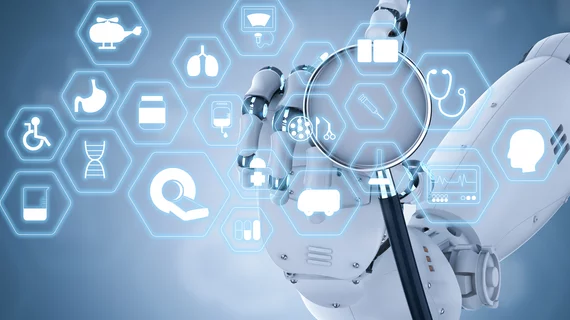A new deep learning network can spot various thoracic diseases on chest x-rays similarly to trained radiologists. With further testing, it may be a boon for the estimated 4 billion people who lack access to medical imaging expertise.
Healthcare experts and computer engineers from Shanghai created their lesion-aware convolutional neural network, or LACNN, using more than 10,000 chest x-rays. The model accurately identified 14 different pathologies and held its own against imaging experts.
In each instance, LACNN either met or exceeded radiologists’ accuracy at classifying thoracic diseases, such as pneumonia, emphysema and effusion, researchers explained Oct. 16 in Clinical Radiology.
“Inspired by the diagnostic processes of radiologists, in which the focus is on identifying relevant lesions when reading CXRs, the LACNN approach was designed to classify thoracic disorders and extract distinctive and meaningful characteristics [in] plain CXRs,” K. Zhou, with Zhongshan Hospital’s Liver Cancer Institute, and colleagues wrote. “Once clinically verified, an automated CXR classification approach with an expert-level performance CAD, such as the present LACNN, could provide substantial clinical benefits in healthcare systems,” they added.
The team used nearly 2,000 chest x-rays to train and optimize the lesion-detection aspect of its platform and another 8,800 to train and test the classification network. It outperformed three radiologists at classifying atelectasis, thoracic masses, and nodules, while yielding no statistical difference for the 11 other pathologies.
Zhou et al. also validated LACNN on an independent set of 1,800 images taken from the ChestX-ray14 public dataset.
While their system performed well, the team did note that its unbalanced distribution of lesion types caused it to recognize consolidation, mass and nodule findings over other lesion types.
On the flip side, they were able to understand how their model arrived at its conclusions, which proved to be similar to the way radiologists evaluate chest x-rays.
Overall, the team proposed a number of potential uses for its platform, most of which involved being used as a clinical aid.
“The proposed LACNN could be utilized to detect thoracic disorders automatically and quickly even in hospital settings that lack available radiologists,” the authors concluded. “It could provide feedback on the presence and locations of abnormalities on CXRs to assist clinicians in making an accurate diagnosis and improving disease management.”
Read much more about the project here.

